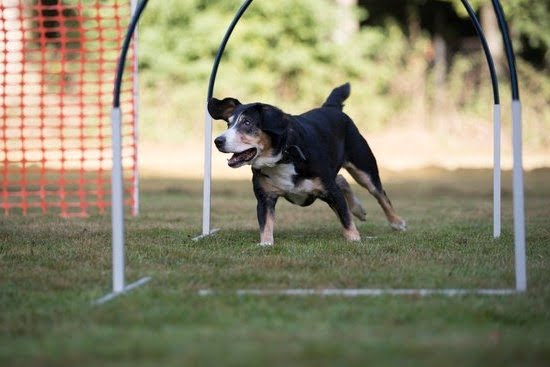Are you struggling with a dog that marks its territory inside your home? If so, you may be wondering how to train dogs not to mark. This behavior can be frustrating and challenging to overcome, but with the right approach, it is possible to prevent marking in your beloved pet.
Understanding why dogs mark is the first step in addressing this issue. Several factors contribute to this behavior, including instinctual territorial marking and hormonal influences. By delving into the reasons behind marking behavior, you can develop a targeted training plan to address and modify this unwanted habit.
The role of spaying and neutering in marking behavior is another crucial aspect to consider. These procedures can significantly impact a dog’s propensity to mark, making them an essential consideration for pet owners looking to address or prevent marking behavior. Additionally, creating a consistent and structured routine, using positive reinforcement techniques, and implementing crate training are all valuable tools for curbing marking tendencies in dogs.
The Role of Spaying and Neutering in Marking Behavior
Spaying and neutering play a significant role in addressing marking behavior in dogs. Both male and female dogs can exhibit marking behavior, which is often linked to their reproductive instincts. Spaying and neutering can help reduce or eliminate this behavior by decreasing the level of certain hormones that drive them to mark their territory.
For male dogs, neutering can significantly decrease the amount of testosterone in their system, reducing the urge to mark their territory. Similarly, spaying female dogs can minimize the hormonal influence that triggers marking behavior. It’s important to note that while spaying and neutering can be effective in addressing marking behavior, it may not completely eliminate the behavior if it has become a habit for the dog.
It’s essential for dog owners to consider spaying or neutering as part of a comprehensive approach to preventing marking behavior. By addressing this aspect of their dog’s biology, owners can set a strong foundation for implementing training techniques and establishing consistent routines that further discourage marking indoors.
Creating a Consistent and Structured Routine for Your Dog
One of the most effective ways to prevent marking behavior in dogs is to establish a consistent and structured routine. Dogs thrive on predictability and routine, so providing them with a set schedule can help reduce their urge to mark. This includes regular feeding times, potty breaks, exercise, and playtime. By maintaining a consistent routine, you can help your dog feel more secure and less likely to engage in marking behavior.
In addition to establishing a routine for your dog’s basic needs, it’s important to incorporate mental stimulation and enrichment activities into their daily schedule. Mental stimulation can help reduce stress and anxiety, which are common triggers for marking behavior. Activities such as puzzle toys, obedience training, and interactive games can keep your dog engaged and satisfied, decreasing the likelihood of marking inside the house.
Another important aspect of creating a consistent routine for your dog is to ensure that they have access to appropriate elimination areas. By taking your dog outside consistently at designated times throughout the day, you can encourage them to urinate or defecate in outdoor areas rather than inside the home. This helps reinforce the idea that marking indoors is not acceptable while also providing them with ample opportunities to relieve themselves in appropriate locations.
Positive Reinforcement Training Techniques for Preventing Marking
When it comes to preventing your dog from marking, positive reinforcement training techniques can be an effective approach. By using rewards and encouragement, you can train your dog to understand what behavior is acceptable and what is not. Here are some positive reinforcement training techniques that you can use to prevent marking:
- Consistent Commands: Use consistent verbal commands such as “no mark” when catching your dog in the act of marking. Follow this up with a redirection command like “go play” to encourage them to move away from the area.
- Rewards: When your dog successfully refrains from marking, reward them with their favorite treats or toys. This reinforces the desired behavior and helps them understand that not marking will result in positive outcomes.
- Clicker Training: Clicker training can also be useful in preventing marking behavior. Use a clicker to mark the moment when your dog chooses not to mark, followed by giving them a treat or praise.
By using these positive reinforcement training techniques, you can effectively communicate with your dog and guide them towards appropriate behavior in the home.
Remember that consistency is key when implementing these techniques. Dogs thrive on routine and clear communication, so it’s important to be patient and persistent in training them not to mark indoors. With time and dedication, you can successfully prevent marking through positive reinforcement methods.
Utilizing Crate Training to Prevent Marking Indoors
Utilizing crate training can be an effective way to prevent marking indoors in dogs. Crate training provides a safe and secure space for your dog when you are not able to supervise them, helping to prevent marking behavior in the house.
Introducing the Crate
When utilizing crate training to prevent marking, it is important to properly introduce the crate to your dog. Start by placing treats and toys inside the crate to entice them to go in. Allow your dog to explore the crate at their own pace and do not force them inside.
Using the Crate for Supervision
When you are unable to keep a close eye on your dog, such as when you are busy or unable to supervise them, using the crate can be an effective tool for preventing marking indoors. By confining your dog to the crate during these times, you can effectively prevent any opportunities for marking behavior.
Consistency and Routine
Consistency is key when using a crate for preventing marking indoors. Create a structured routine for your dog that includes regular breaks outdoors for elimination. This will help reduce the likelihood of marking behavior occurring while they are inside the house.
By implementing proper introduction of the crate, utilizing it for supervision, and maintaining consistency in their routine, pet owners can effectively prevent indoor marking through crate training.
Identifying and Addressing Potential Medical Issues
While marking is a natural behavior for dogs, it can also be a sign of underlying medical issues. It’s important to rule out any health concerns before addressing marking behavior. If your dog suddenly starts marking indoors, it could be an indicator of a urinary tract infection or other medical problem. It’s essential to consult with a veterinarian to rule out any potential medical issues that may be causing the marking behavior.
In addition to urinary tract infections, certain medical conditions such as bladder stones or diabetes can also contribute to increased urine marking. These conditions can lead to increased frequency and urgency of urination, making it difficult for dogs to hold their bladder. Therefore, it’s crucial for pet owners to seek professional veterinary help and have their dogs undergo thorough medical examinations if they suspect that their pet’s marking behavior may be caused by an underlying health issue.
It’s also worth noting that spaying and neutering play a significant role in reducing the likelihood of marking behavior in dogs. Neutered male dogs are less likely to engage in territorial marking, while spayed female dogs are less likely to mark due to hormonal changes. Therefore, discuss spaying or neutering your pet with your veterinarian if you haven’t done so already, as this can have a positive impact on preventing marking behavior.
| Medical Conditions | Impact on Marking Behavior |
|---|---|
| Urinary Tract Infection | Increase in indoor urine marking |
| Bladder Stones or Diabetes | Increased frequency and urgency of urination |
| Spaying and Neutering | Reduces likelihood of territorial marking |
Understanding the Importance of Supervision and Correction
Supervising Your Dog
One of the most crucial steps in preventing marking behavior in dogs is providing constant supervision. When you are unable to directly observe your dog, it’s important to confine them to a specific area using a crate or dog-proof room. By keeping a close eye on your dog at all times, you can quickly intervene if they show signs of marking behavior.
Correcting Undesirable Behavior
If you catch your dog in the act of marking, it’s essential to interrupt them with a firm “no” and immediately take them outside to finish their business. It’s important not to physically punish your dog for marking, as this can cause fear and anxiety. Instead, focus on redirecting their behavior and reinforcing appropriate bathroom habits with positive reinforcement.
Consistency in Correction
Consistency is key when it comes to correcting marking behavior. Every member of the household should understand the correct protocol for addressing undesirable marking and enforce these rules consistently. This will help your dog understand that marking indoors is never acceptable and that there are specific consequences for this behavior.
By closely supervising your dog, correcting any instances of indoor marking, and maintaining consistency in your approach, you can effectively communicate to your dog that this behavior is not tolerated. With patience and dedication, you can help your furry companion learn appropriate bathroom habits and prevent unwanted marking indoors.
Consistency Is Key
Consistency is crucial when it comes to preventing marking behavior in dogs. This means maintaining a routine and approach that reinforces the message that marking is not acceptable. Consistency involves everyone in the household following the same rules and techniques, as mixed messages can confuse a dog and hinder progress.
It’s important to remember that preventing marking requires ongoing effort and vigilance. Even after initial success, it’s essential to continue implementing the training and routines to ensure that your dog does not revert to marking behavior. This includes consistently using positive reinforcement, correcting any lapses in behavior, and monitoring your dog’s actions closely.
In addition to maintaining consistency within your own home, it’s also critical to reinforce consistent behavior outside of the home environment. With continued reinforcement of proper behavior, your dog will better understand what is expected of them regardless of their surroundings.
| Consistency Techniques | Description |
|---|---|
| Establishing a routine | Regular feeding times and designated potty breaks can help prevent marking. |
| Positive reinforcement | Rewarding good behavior with treats or praise encourages continued positive actions. |
| Correction techniques | Gently correcting any instances of marking with a firm “no” can help discourage this behavior. |
Seeking Professional Help if the Issue Persists
In conclusion, training a dog not to mark requires patience, consistency, and a structured approach. Understanding the reasons behind marking behavior, such as territory marking or anxiety, is crucial in addressing the issue effectively. Additionally, spaying and neutering can play a significant role in reducing the likelihood of marking behavior in dogs.
Creating a consistent routine for your dog, utilizing positive reinforcement techniques, and implementing crate training are essential steps in preventing indoor marking. It’s also important to be vigilant in identifying and addressing any potential medical issues that may be contributing to the behavior.
Supervision and correction are key components in preventing marking, as is maintaining a disciplined and consistent approach. However, if despite all efforts the issue persists, seeking professional help from a qualified dog trainer or behaviorist may be necessary.
Professional guidance can provide additional support and strategies tailored to your specific situation to address and resolve any persistent marking behavior in your dog. Remember that every dog is unique, so it’s important to be patient and adaptive in finding the right approach for your furry friend.
Frequently Asked Questions
How Do I Stop My Dog From Constantly Marking?
One way to stop your dog from constantly marking is to get them spayed or neutered, as this can reduce their desire to mark territory. Another method is consistent obedience training and using positive reinforcement to redirect their behavior.
Additionally, keeping a close eye on your dog and interrupting the marking behavior with a firm “no” command can help discourage the behavior.
Can You Train a Dog Out of Marking?
Yes, it is possible to train a dog out of marking through consistent training and positive reinforcement. This includes teaching them basic obedience commands, closely monitoring their behavior, and redirecting their attention when they attempt to mark. It’s important to be patient and persistent with the training process, as breaking a habit takes time and consistency.
How Do I Stop My Male Dog From Peeing on Everything Outside?
To stop your male dog from peeing on everything outside, it’s important to first understand that this behavior is often driven by the need to mark territory. One approach is to ensure that your dog gets enough physical exercise and mental stimulation every day.
Additionally, you can use positive reinforcement techniques such as treats and praise when they exhibit appropriate bathroom behavior outdoors. Consistently supervising outdoor activities and redirecting any attempts to mark excessively can also help modify this behavior over time.

Welcome to the blog! I am a professional dog trainer and have been working with dogs for many years. In this blog, I will be discussing various topics related to dog training, including tips, tricks, and advice. I hope you find this information helpful and informative. Thanks for reading!





